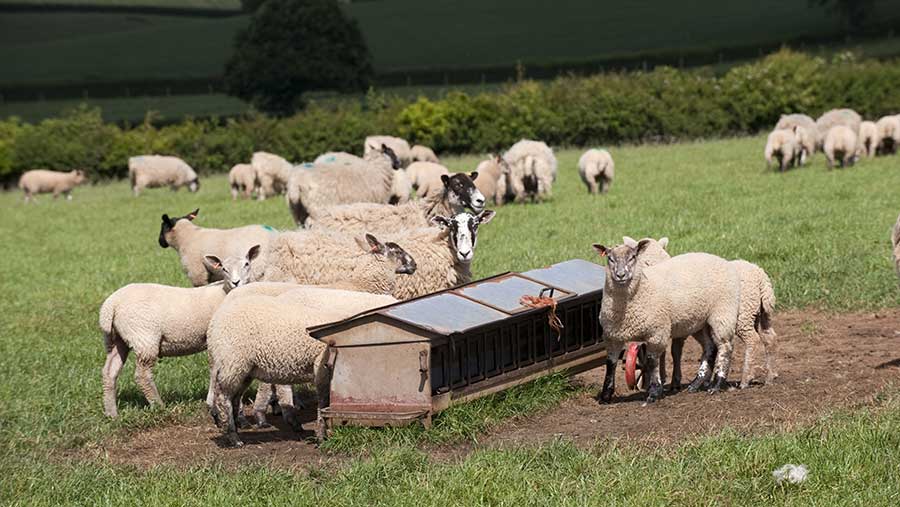Lamb prices fall as grass shortage hampers finishing
 © REX/Shutterstock
© REX/Shutterstock More imports and a lack of heavy lambs coming to market have caused prices to slip for the fifth week in a row as dwindling grass takes its toll on livestock producers.
Despite significantly fewer lambs coming to market than earlier in the month, prices stood below year-earlier levels last week for the first time since January, at 212.39p/kg, 0.8p/kg below 2017 levels.
And there has been no respite this week, with the Great Britain liveweight average price for 3 July slipping a further 7p/kg to stand at 205.77p/kg.
See also: 5 key steps for ewe and lamb management at weaning
Shropshire sheep and beef farmer Tony Sheppard said the last time grass conditions on his farm had been this bad was in 1976.
“We have sold 20% less lambs than a normal year even with creep feeding,” he said, explaining that with the grass shortages all lambs coming to market with good fleshing will have been fed.
Falling prices were presenting farmers with a dilemma, he said: whether to erode profit margins by paying for expensive feed, reducing pressure on dwindling grass, or to keep more lambs for longer and risk a significant check on growth rates if the drought continued.
The data suggests that many farmers are doing the latter at this stage, as AHDB analyst Rebecca Oborne said just 81,100 lambs were sold through markets in the last week of June, a 10% fall on levels two weeks earlier.
Total new season lambs recorded at auction markets so far this year in Great Britain is 26% (170,300 head) below year-earlier levels, equivalent to about two weeks’ throughput at current levels.
Deadweight numbers have increased in slaughterhouses on the week, but numbers there are also estimated to be below year-earlier levels.
However, with prices still standing well above the five-year average, Ms Oborne said additional price pressure had been caused by a sharp increase in imports from New Zealand after the gap in deadweight farmgate prices increased to £2/kg.
